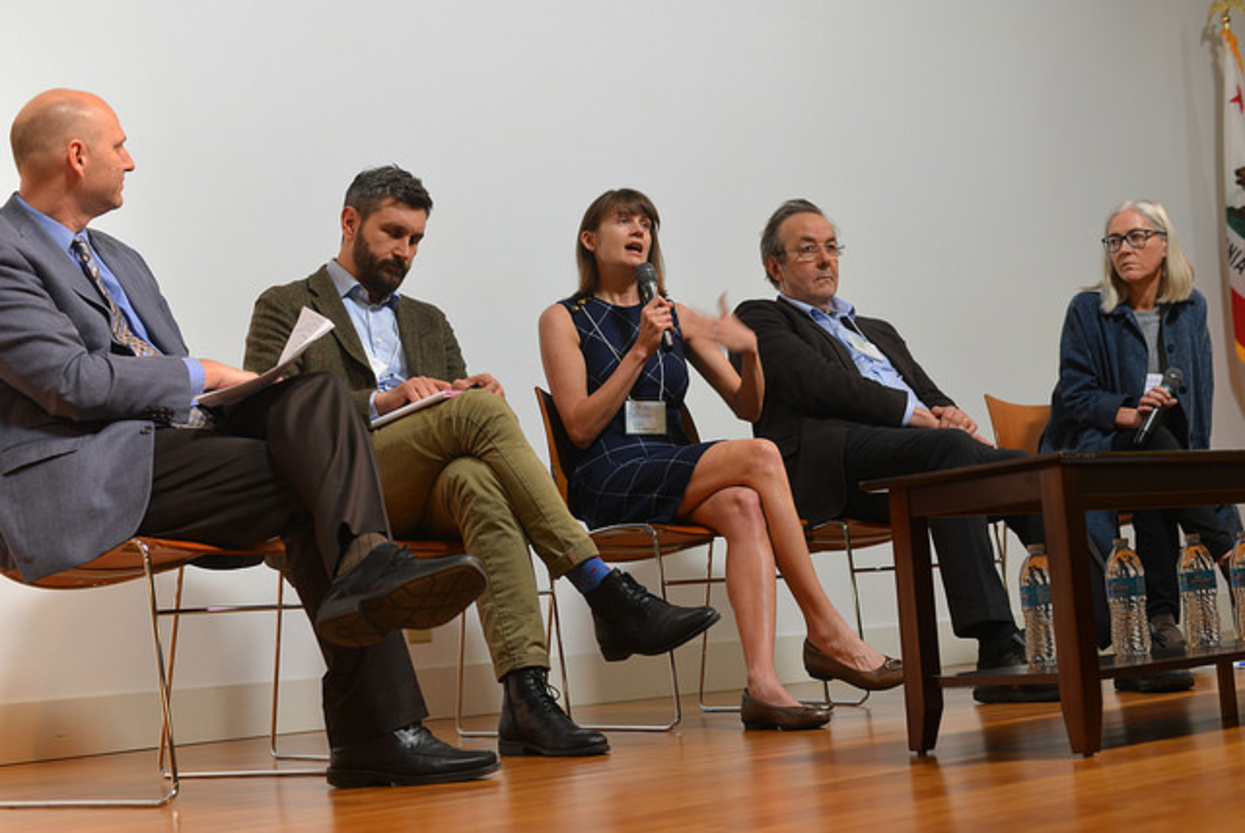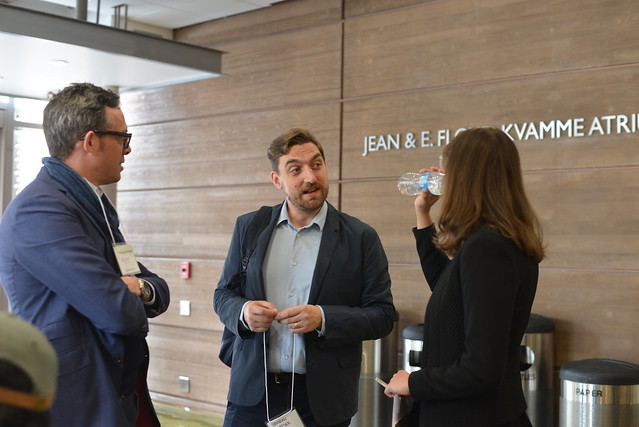Revisited: The Past is Present Symposium

The Berkeley Center for New Media was proud to host our hallmark Spring conference on April 5th, 2018 with a stunning set of demonstrations, exhibitions, workshops, and, of course, an incredible one day symposium, entitled "The Past is Present: Virtuality, Archaeology, and the Future of History."
Over the day, our speakers asked how our study of the past and its material legacy must adapt with rapid advances in modern documentation and interpretive technologies.
The symposium kicked off with "A Fragile Past: Documenting Archaeology and Architecture," featuring Christophe Girot (ETH Zurich), Nicolò Dell'Unto (Lund University), Elaine Sullivan (University of California, Santa Cruz), and Eugenie Shinkle (University of Westminster), moderated by Benjamin Porter (University of California, Berkeley). From projects charting inaccessible borders from political instability to visualizations of ancient sites over time, the speakers shared some of their latest work in the field, exploring the new possibilities for documenting archaeology and architecture. During discussion, however, speakers delved into issues around subjectivity. Which sites scholars choose to document, with which technologies, and from which vantage points, all contribute to a specific subjective understanding of place and time.
Following demonstrations at lunch from Noah Eckhous, representing Geoslam Zeb-Revo, Thomas Schofield & Janet Lee, representing High Fidelity, and Chris Brown representing Faro scanners, the symposium continued with "Previous Pasts: Accessing history through Drawings, Plans, Casts, and Copies." Adam Lowe (Factum Arte), Brendan Cormier (Victoria & Albert Museum), and David Gissen (California College of the Arts), with moderation from Jennifer Stager (City College of California), shared how new technologies are providing new points of access to the past and are promoting new sites of scholarship. New scanning technologies have, for example, been able to expose secret compartments in ancient tombs through their high quality photographs. Technological advances have been able to digitally manipulate lighting on famous paintings and busts to show how these artifacts would have appeared in the past. The ability to recreate these historical objects has allowed members of the public to access the past, without destroying or compromising the artifacts themselves.
The symposium culminated with a "Publishing the Past: Academic, Public, and Pedagogical Priorities for the 21st Century." Maurizio Forte (Duke University), Rachel Opitz(University of Glasgow), and Stuart Eve (University College London), with moderation from Sonia Katyal (University of California Berkeley), explored possible publishing platforms for this groundbreaking work. Thorny questions began to be raised here of the cost of maintaining these new publications, and how to ensure that work is open and accessible when many 3D visualization platforms are expensive to maintain and require recoding every 3-5 years. One audience member suggested separating data from the published work, but as Rachel Opitz eloquently clarified, it was the published work itself that contains the insights and the scholarly contributions of their work.
The Phoebe A. Hearst Museum of Anthropology, with support from Research, Teaching, and Learning, then graciously hosted participants at a reception to continue these incredible conversations.
Presented in partnership with swissnex San Francisco, with support from Arts + Design, LAEP, the Phoebe A. Hearst Museum of Anthropology, CITRIS and the Banatao Institute, Research, Teaching and Learning (RTL), the Archaeological Research Facility (ARF), and Digital Humanities at Berkeley.

